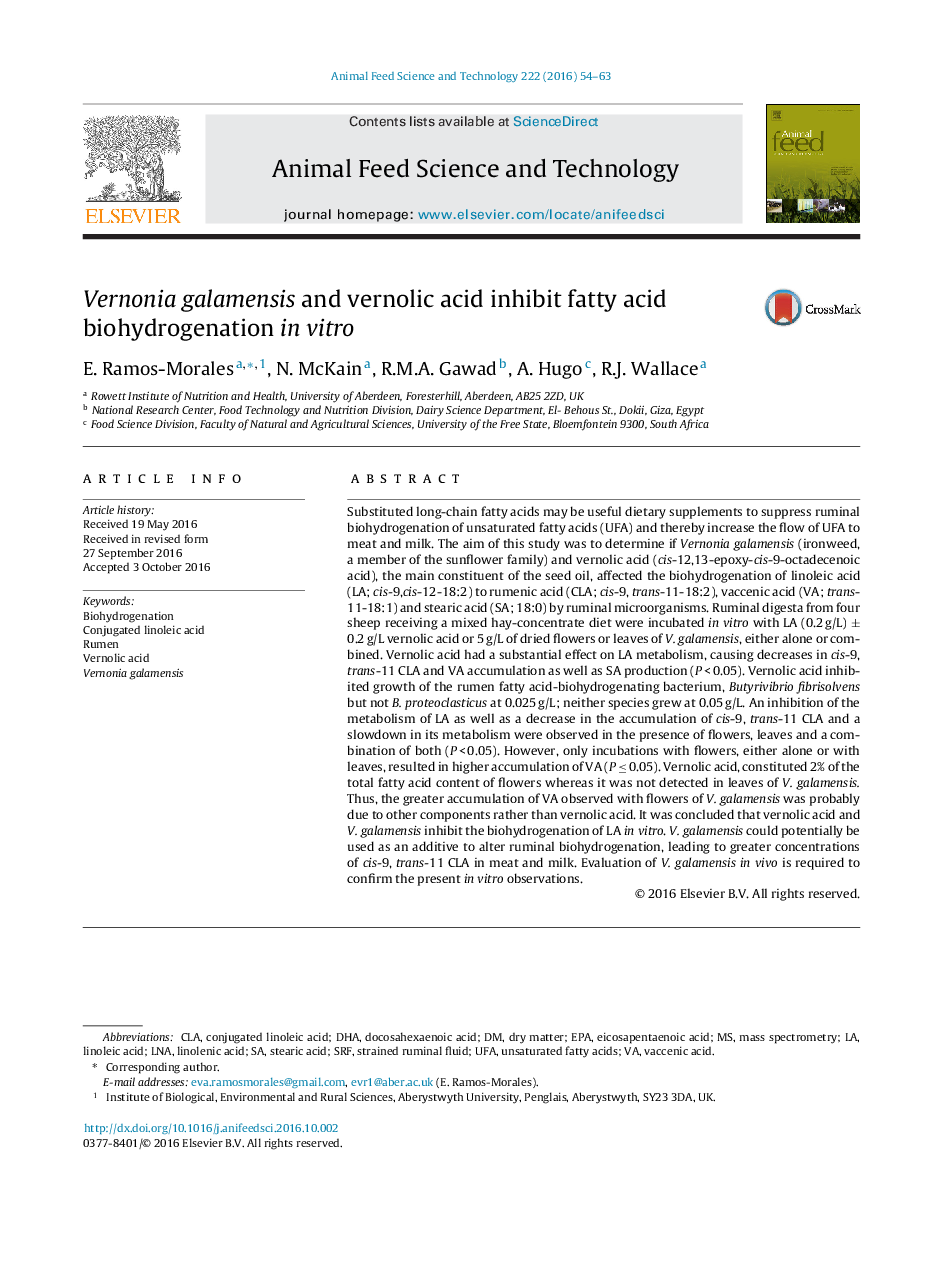| کد مقاله | کد نشریه | سال انتشار | مقاله انگلیسی | نسخه تمام متن |
|---|---|---|---|---|
| 5538819 | 1552364 | 2016 | 10 صفحه PDF | دانلود رایگان |
عنوان انگلیسی مقاله ISI
Vernonia galamensis and vernolic acid inhibit fatty acid biohydrogenation in vitro
دانلود مقاله + سفارش ترجمه
دانلود مقاله ISI انگلیسی
رایگان برای ایرانیان
کلمات کلیدی
EPAUFASRFCLAVernonia galamensisLNAStearic acid - اسید استئاریک Eicosapentaenoic acid - اسید ایکوزاپنتانوئیکdocosahexaenoic acid - اسید داکوزاگزوائونیکLinoleic acid - اسید لینولئیکconjugated linoleic acid - اسید لینولئیک کونژوگهLinolenic acid - اسید لینولینیکVernolic acid - اسید ورنیکUnsaturated fatty acids - اسیدهای چرب غیر اشباعbiohydrogenation - بیو هیدروژنDHA - دوکوساهگزائنوئیک اسیدRumen - شکمبه، سیرابیMass spectrometry - طیف سنجی جرمیdry matter - ماده خشکVaccenic acid - واکسن اسید
موضوعات مرتبط
علوم زیستی و بیوفناوری
علوم کشاورزی و بیولوژیک
علوم دامی و جانورشناسی
پیش نمایش صفحه اول مقاله

چکیده انگلیسی
Substituted long-chain fatty acids may be useful dietary supplements to suppress ruminal biohydrogenation of unsaturated fatty acids (UFA) and thereby increase the flow of UFA to meat and milk. The aim of this study was to determine if Vernonia galamensis (ironweed, a member of the sunflower family) and vernolic acid (cis-12,13-epoxy-cis-9-octadecenoic acid), the main constituent of the seed oil, affected the biohydrogenation of linoleic acid (LA; cis-9,cis-12-18:2) to rumenic acid (CLA; cis-9, trans-11-18:2), vaccenic acid (VA; trans-11-18:1) and stearic acid (SA; 18:0) by ruminal microorganisms. Ruminal digesta from four sheep receiving a mixed hay-concentrate diet were incubated in vitro with LA (0.2 g/L) ± 0.2 g/L vernolic acid or 5 g/L of dried flowers or leaves of V. galamensis, either alone or combined. Vernolic acid had a substantial effect on LA metabolism, causing decreases in cis-9, trans-11 CLA and VA accumulation as well as SA production (P < 0.05). Vernolic acid inhibited growth of the rumen fatty acid-biohydrogenating bacterium, Butyrivibrio fibrisolvens but not B. proteoclasticus at 0.025 g/L; neither species grew at 0.05 g/L. An inhibition of the metabolism of LA as well as a decrease in the accumulation of cis-9, trans-11 CLA and a slowdown in its metabolism were observed in the presence of flowers, leaves and a combination of both (P < 0.05). However, only incubations with flowers, either alone or with leaves, resulted in higher accumulation of VA (P â¤Â 0.05). Vernolic acid, constituted 2% of the total fatty acid content of flowers whereas it was not detected in leaves of V. galamensis. Thus, the greater accumulation of VA observed with flowers of V. galamensis was probably due to other components rather than vernolic acid. It was concluded that vernolic acid and V. galamensis inhibit the biohydrogenation of LA in vitro. V. galamensis could potentially be used as an additive to alter ruminal biohydrogenation, leading to greater concentrations of cis-9, trans-11 CLA in meat and milk. Evaluation of V. galamensis in vivo is required to confirm the present in vitro observations.
ناشر
Database: Elsevier - ScienceDirect (ساینس دایرکت)
Journal: Animal Feed Science and Technology - Volume 222, December 2016, Pages 54-63
Journal: Animal Feed Science and Technology - Volume 222, December 2016, Pages 54-63
نویسندگان
E. Ramos-Morales, N. McKain, R.M.A. Gawad, A. Hugo, R.J. Wallace,